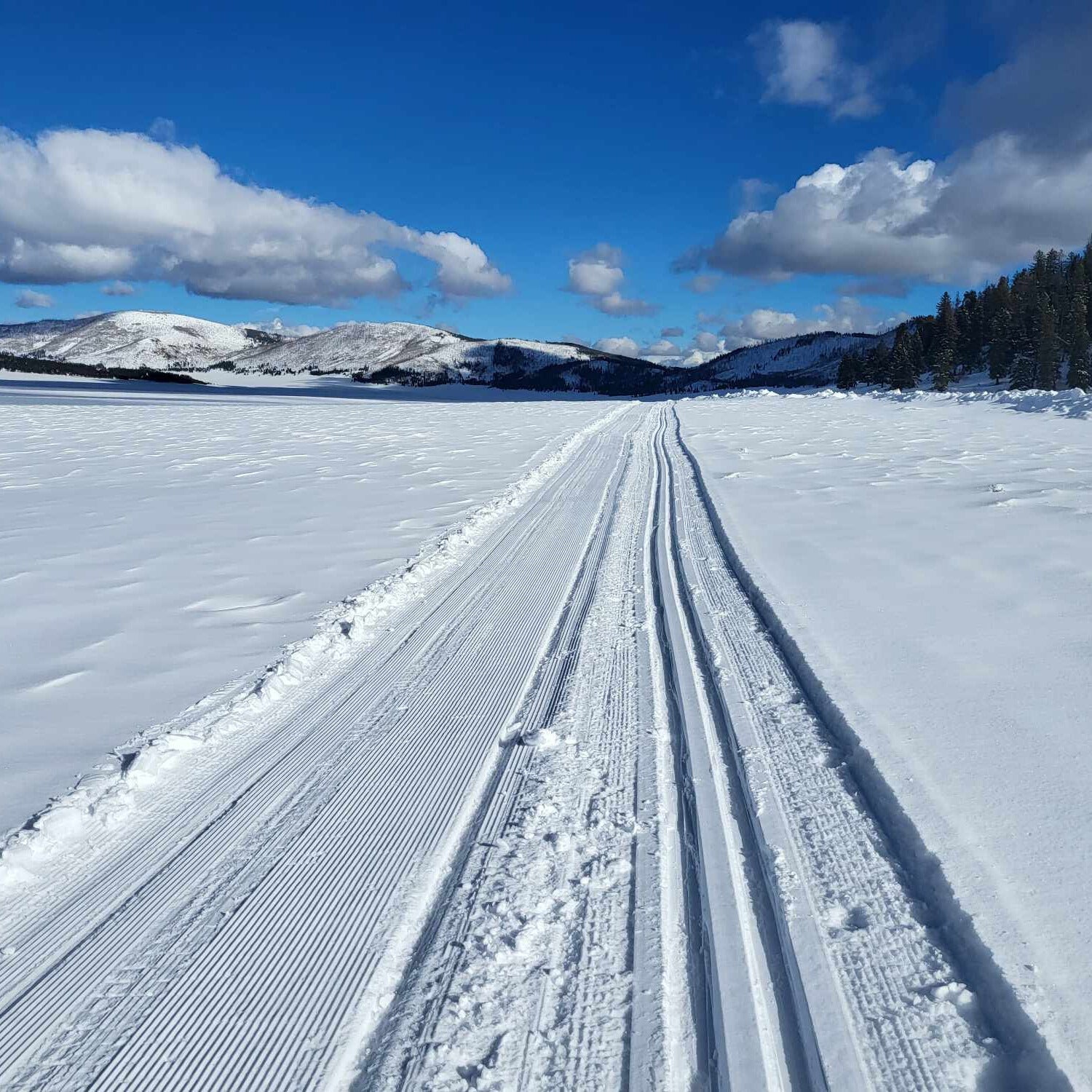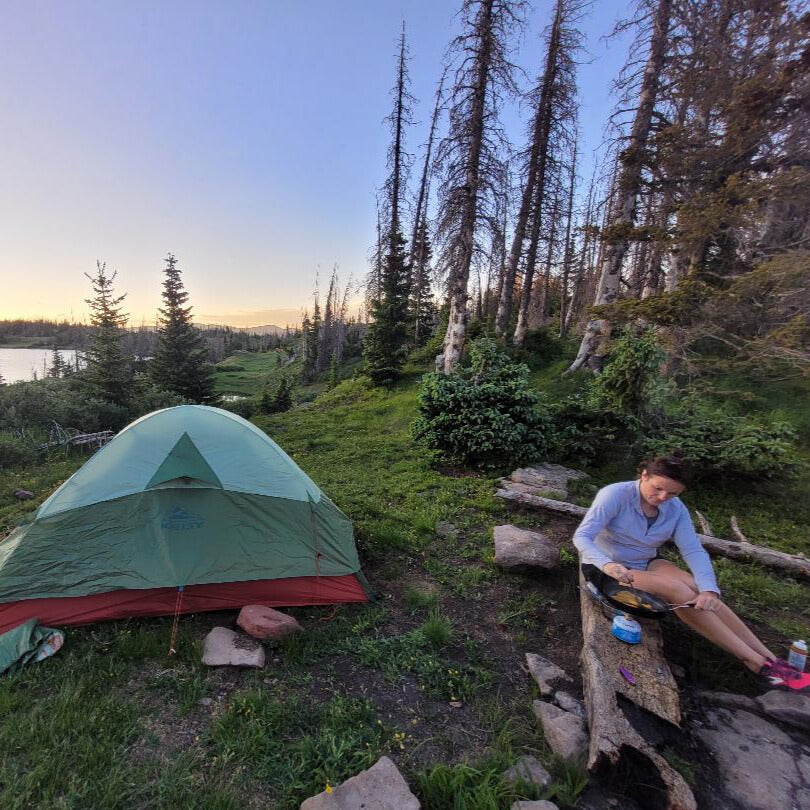Your Cart is Empty
accepting gear drop offs Mon-Sat 10am-5pm. No Consignment acceptance on Sundays.
accepting gear drop offs Mon-Sat 10am-5pm. No Consignment acceptance on Sundays.

It’s backpacking–with wheels.
Bikepacking, an adventurous combination of cycling andbackpacking, is rapidly growing in popularity, thanks in part to social media and the proliferation of popular routes and races.
This pursuit requires specialized gear to ensure a comfortable and efficient journey, but if you have what it takes to backpack, you are 90% of the way there—basically, all you have to do is add a bike and some bags for it.
The pros atDurango Outdoor Exchange have been bikepacking for years on everything from demanding backcountry routes to leisurely frontcountry dirt roads, and know what is needed for a successful adventure.
Here’s a detailed list of essential gear for bikepacking:
Bike:
Type: Gravel bike, mountain bike, or a sturdy touring bike
Features: Reliable components, wide tires for off-road stability, and multiple gear mounting points
Bags:
Frame bag: Fits inside the triangle of your bike frame
Handlebar bag: Attaches to the handlebars for lightweight items
Saddle bag: Mounts under the seat, best for clothing and sleeping gear
Top tube bag: For small and quick-access items
Bike rack and panniers
Traditional panniers are typically best suited for light touring or tours largely on paved roads. Panniers can mount on your seatpost stay and connect to near your rear wheel axle, or mount on the rear triangle. Because of these mounting points, most bikes used in bikepacking are front-suspension only fully rigid.
Water bottle cages:
Ensure you can carry enough water, including extra cages on the frame or fork
Tent or tarp
Sleeping bag or quilt
Sleeping pad:
Cooking gear: Stove, fuel, cookware, mug, and matches
Cycling shorts and jerseys: Moisture-wicking and quick-drying
Layering system: Base, mid layer, and outer layer
Bike shoes: Stiff-soled for efficient pedaling, yet comfortable for walking
Socks: Wool or synthetic for moisture management
Gloves
Helmet
Neck gaiter
Rain gear
GPS device or smartphone
Maps
Lights: Front, rear, and headlamp
Multi-tool: With essential bike tools for repairs
Tire repair kit: Spare tubes, bacon strips, patch kit, tire levers, and a mini pump
First aid kit: Can’t hurt
Whistle:For emergencies
Hydration system:
Water bottles or hydration bladder
Water filter or purification tablets: For treating water from natural sources
Food:
Lightweight, non-perishable, and calorie-dense
Freeze-dried meals, energy bars, nuts, and dried fruits
Bear canister or bag:
Sunscreen and lip balm
Insect repellent
Smartphone
Toiletries
Repair supplies
Distribute weight evenly: Aim for balanced load distribution to maintain bike handling.
Keep essentials accessible: Items like snacks, maps, and rain gear should be easily reachable.
Test ride: Do a trial run with your loaded bike to adjust weight distribution and comfort.
As you may have noticed, bikepacking requires not only carrying a decent amount of gear, but also means you need to figure out where to put it all. While frame bags and bags that attach to a bike’s handlebars and seat posts are most popular among dedicated bike packers and racers, casual bikers may prefer a trailer.
Trailers come in several varieties, with the most popular being the BOB, a single-wheel trailer suitable for light mountain biking that attaches to each end of your bike’s rear axle. Others may repurpose a double-wheel child-carrying trailer by removing the seat and seat belts. Double-wheel trailers are easier to park, unhook, and unpack, though will limit your rides to pavement and dirt roads. Other two-wheel trailers include flatbed trailers made for hauling gear and even home-made contraptions that look like mini teardrop campers.
Yes, used gear is perfect for bikepacking. Fromused mountain bikes to used tents, using pre-loved gear can save you money while allowing you to get high-quality gear. Buying some used gear can be particularly smart when it comes to bikepacking. Why? Many people only go bikepacking once or twice a year, meaning even gear that is years old may only have been used a dozen or so times.
The areas around Durango are laden with backpacking opportunities ranging from a simple overnight to a week-long adventure. If you are a pro bikepacker, you probably already know where to go, but if you are a first timer, it can be tricky to find the right combination of length and difficulty. When looking at routes, keep in mind that your bike is going to easily have 20 pounds of gear on it, so even minor hills can be daunting.
Here are some places to go bikepacking around Durango that may be suitable for novices. Don’t be afraid to spend a few evenings on Google Maps looking at potential routes:
Upper Hermosa Creek area: Plenty of easy dirt roads and trails to cruise on and oodles of discrete backcountry camps.
Comb Wash: Assuming the road isn’t too sandy, this can get you introduced to bikepacking in the desert—but expect to need to carry all of your water.
Lockhart: This area adjacent to Canyonlands National Park has tons of easy dirt roads to pedal down.
H-D Mountains: Beware of private property and drilling operations, but this out-of-the-way spot does have good gravel road biking to secluded campsites.
Cascade Creek: At times challenging, this is a great introduction to bikepacking on a mellower mountain bike trail.
Jersey Jim Lookout Tower: This area near Mancos is packed with easy forest roads.
Not sure how to get started bikepacking in Durango? Stop byDurango Outdoor Exchange, where our enthusiastic outdoor pros can tell you more about what you need to go bikepacking and where you should head.

Thanksgiving is almost here–and skiing this early is always a gamble. Here are some non-skiing warm(er) weather destination ideas for the long break.

Just a couple hours from Durango, Valles Caldera is a great cross-country skiing destination, with surprisingly good snow and very few visitors.
Valles Caldera National Preserve is a popular hiking destination in the summer and a surprisingly great skiing destination in the winter.

When spending one night (or many) in the backcountry, a warm dinner at night and hot beverage in the morning can make the difference. That invariably involves using a stove of some sort–but which one?
Stove technology has been around for decades, but new tech is making them lighter, more efficient, and more dependable than ever before. Here’s a rundown of the different kinds of backpacking stoves: